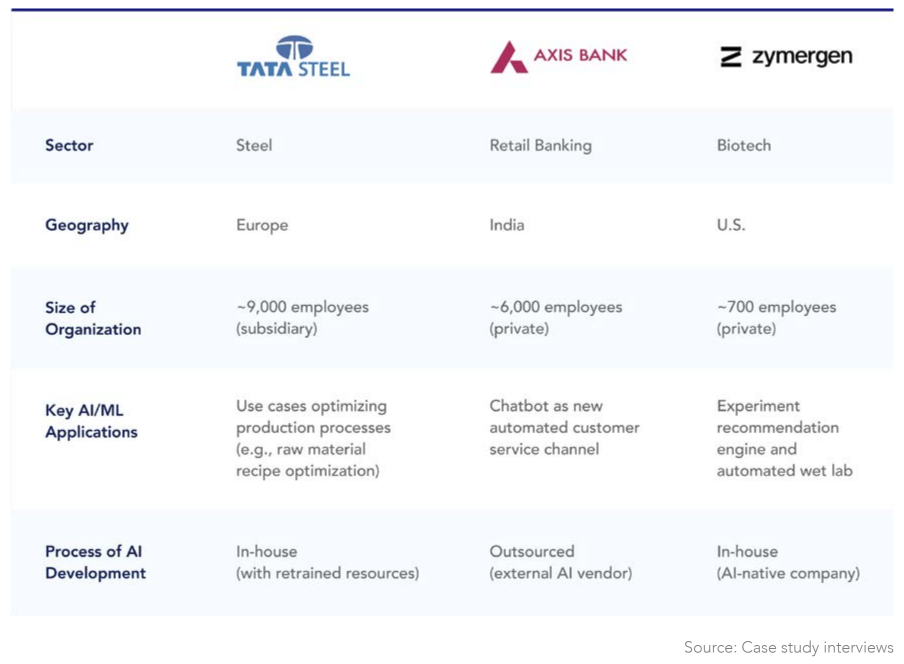What are AI’s Real-World Impacts on Labor and the Economy?
What are AI’s Real-World Impacts on Labor and the Economy?
Announcing The AI, Labor, and the Economy Case Study Compendium
The impact of artificial intelligence (AI) on the economy, labor, and society has long been a topic of debate — particularly in the last decade — amongst policymakers, business leaders, and the broader public. Estimates of its current and imminent labor and productivity impacts have varied widely, often reaching contradictory conclusions. A salient question for researchers, managers, and economic analysts has been whether large investments in AI and machine learning (ML) are warranted. Can the promises of AI be realized, and if so, what are their potential impacts on the various stakeholders involved?
To help elucidate these various areas of uncertainty, we are pleased to today publish a series of case studies conducted by the Partnership on AI (PAI)’s Working Group on “AI, Labor, and the Economy” (AILE). The AILE Case Study Compendium investigates the labor implications and productivity impacts of AI implementation through a series of case studies across different applications, geographies, and sectors. Using interview-based methods, we examined the impact of AI applications at three companies: Axis Bank, Tata Steel Europe (TSE), and Zymergen.

An Overview of the Case Studies
Despite the variety in the firms studied across the case studies, three common motifs emerged:
- Successful adoption of new AI systems required buy-in from management and the workforce alike. In doing so, having intelligible ML models was of paramount importance.
At Zymergen, a young company with AI/ML central to its founding mission, employee buy-in was generally assumed from the beginning. At TSE and Axis Bank, however, teams needed to approach changes in culture and practice more proactively with relevant internal stakeholders. In all three cases, executive support and early investment in employee training and awareness-building helped to engender trust internally and was critical for successful AI adoption. For instance, TSE recognized the value of bringing plant operators into the ML model development and began holding “office hours” in which they and project managers could discuss the analytics models with data scientists. Data scientists at Zymergen also found that upfront and frequent involvement of physical scientists in the machine learning model was critical to building trust for successful implementation. Across the three organizations, explainability of AI systems played a critical role in building this trust with employees, customers, and regulators. - Each firm reported productivity or financial gains in the short term.
TSE reports it experienced productivity gains through improved production yield, reduced raw material expenses, and enhanced product quality. Axis Bank reports it was able to handle its growing customer service volumes with fewer customer service agents, driven by migration from human-enabled to automated customer service channels. Lastly, in the Zymergen case, management reported higher labor productivity, driven by a high degree of automation in the wet lab and accelerated project durations compared with conventional R&D labs. In all cases, however, these effects could not be attributed solely to AI, as other process changes always accompanied the introduction of AI technologies. - Workforce impacts varied and in some cases, cascaded beyond the firms.
In the three cases, we observed varying degrees of labor impacts, both direct and indirect, demonstrating that labor effects are often multi-layered and can extend beyond the core organization implementing AI. The case studies also demonstrated that industry and regulatory contexts play a role in how AI-related initiatives impact labor. For instance, Tata Steel Europe operates in a mature and highly unionized industry with a relatively inflexible labor market. As a result, TSE specifically avoided workforce reduction, although this may not be the case in the long-term. At Axis Bank, the effects of AI implementation most directly impacted its third-party customer service provider rather than internal employees. Similarly, Zymergen’s business model may have external, downstream impacts on its customers’ R&D teams, potentially leading to lower hiring rates in the future. As these cases demonstrate, the social and economic impact of AI and other automating technologies goes beyond the immediate sites of implementation and cascades across supply chains, partners, customers, and others affected by the technology.
Though we observed certain common themes across the three case studies, each organization faced its own context-specific opportunities and challenges. For instance, we note greater flexibility for Zymergen – an “AI-native” company – in pursuing its programs, than for longer-established companies, particularly those that may have greater regulatory complexity or unionized workforces. Scholars, managers, policymakers, and others should not overlook these contextual factors when trying to gauge AI’s impact on individual organizations and the broader economy.
Lastly, we acknowledge that this group of case studies is not comprehensive and that its chosen methodology and scope has limitations. For instance, our interviews were primarily with management at each of the subject organizations. One valuable area for future research would be collecting and synthesizing data directly from workers directly impacted by AI implementation. As documentation of the actual impact of real-world AI applications, albeit partial, the case studies can contribute nuanced pictures of the way that AI and ML are playing out in real workplaces. These observations and insights should inform ongoing dialogue on the impact of AI on labor and the economy.
For a more extensive discussion of gaps in the literature and further areas of potential research, please see our extended case studies. We advise beginning with the Compendium Synthesis Document which summarizes the key findings and themes across the case studies. We look forward to hearing your thoughts on the insights revealed through these case studies, and welcome a continued conversation about AI’s labor and productivity impacts.

